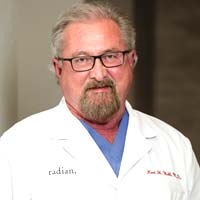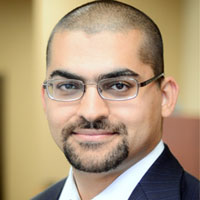NeoGraft Scar Free Hair Transplantation Procedure in San Diego
SHAFT SAN DIEGO, an aesthetic medicine practice in San Diego offering advanced cosmetic procedures, announced the availability of NeoGraft Scar Free Hair Transplantation procedure for their patients suffering from androgenic male or female alopecia, or other types of permanent hair loss.
NeoGraft Scar Free Hair Transplantation is highly beneficial as it leaves no scars and does not involve painful procedures. NeoGraft, according to officials at SHAFT SAN DIEGO, has revolutionized hair restoration therapy in the world.
United States tops the list of countries in the number of hair transplant surgeries performed in a year. According to the latest ISHRS
2011 Practice Census Results, over 100,000 hair transplant surgeries were performed last year in the U.S. of the total 279,381 surgeries performed worldwide. Of these 85.9 percent of the hair restoration surgeries were performed in male patients.
Statistics reveals that over 50 million men and about 21 million women in the United States suffer from male/female pattern baldness or hair loss. More than 40 percent of men will have a noticeable hair loss by age 35. Sixty-five percent of women will have noticeable hair loss by the time they are 60, according to a
press release.
Hair restoration procedures have gained significant popularity over the past several years, chiefly attributed to the general awareness about these procedures as well as the pressure from the job market and social relationships. As the procedure gains popularity, new technologies and treatment options are being introduced to cater to a wider market. The latest NeoGraft Scar Free Hair Transplantation is a typical example to demonstrate the popularity of these cosmetic procedures.
Past hair transplantation procedures were time intensive, invasive, and required specialized skills that were developed over time. Traditional manual strip method of hair transplantation required the doctor to surgically remove a strip of scalp from the back of the patient's head. On the other hand, the NeoGraft procedure, which follows the follicular unit extraction" or “FUE” method, is less invasive and more comfortable to patients. It is more efficient and reduces the time and efforts of both the patient and the surgeon.
In FUE, hair follicles are gently lifted out of the scalp with a small instrument and light suction, and then placed into the bald or thinning areas with reverse air pressure. With NeoGraft, hair is harvested without leaving the large linear scar associated with the strip method.
As there is no linear scar on the head, there is no need for painful stitches and healing time is significantly reduced. You may also cut your hair short. There is no residual hair donor area numbness and tightness caused by an incision. More importantly, you get a naturally growing hair with a more natural appearance thanks to the precision of the harvesting and implantation process.
The procedure of NeoGraft Scar Free Hair Transplantation is described below:
- Identify and plan the pattern of hair restoration for the patient
- Prepare a small extraction area in the back of the scalp by cutting the hair short.
- Extract each naturally occurring follicular unit (containing from 1-5 hairs) from that area using a very small instrument by using gentle air pressure to slide out each follicular hair unit.
- Implant the hair quickly into the balding area, maintaining their viability and increasing the success of the grafting process.
Before the availability of the NeoGraft device, an FUE hair transplant session was often limited to transplanting 500 to 600 grafts in a day. With NeoGraft, up to 2,000 grafts or more can be completed in a single day, making the process much faster and easier on the patient, according to officials at
SHAFT SAN DIEGO.
Frequently asked questions about hair transplant procedures
How much does a hair transplant cost?
Hair transplants can vary in price based off of the area in the world that you are interested in getting a hair transplant as well as the size of the area where you may need a hair transplant. Experienced doctors in the United States will often charge some of the highest prices for a hair transplant worldwide and this is why so many travelers make the move to other parts the world like Turkey, India, Thailand, Mexico...etc for their hair transplants.
Will a hair transplant hurt?
Although hair transplants may look like a particularly
unpleasant or painful experience is actually very little discomfort involved
with the surgery itself. Hair transplants are always done under an anesthetic so there's absolutely zero pain during the treatment itself. Many people actually relate the process as being very similar to going to the dentist for filling or root canal. Mild pain can persist over the course of postop treatment but he generally just resumes for a few days.
Who can deliver the best surgery?
It's usually best to consider working with surgeons who have and IAHRS certification or international alliance of hair restoration surgeons recognition. IAHRS can often deliver recommendations for the best surgeons in each particular area.
Is this scarring noticeable?
Any type of hair transplant will require the use of incisions throughout the scalp. There can also sometimes be a small scar from the donor area towards the back of the scalp. Asking to look at photos of the surgeon's previous work will help you to see roughly how bad the scarring could be. In most cases an experienced professional can limit the look of scarring and noticeable marks from the surgery.
How long does it take for the hair to grow?
In most cases hair growth will start within eight months and you can start to see a full effect from the hair transplant after a full year. The initial signs of growth can usually start between 3 to 4 months after the surgery.
Are the results permanent?
The hair follicles that are transplanted are generally the ones which are genetically resistant against the symptoms of baldness. As long as you receive hair loss treatment later in your life after the symptoms of balding have started to subside, you can have a better chance at permanent results.
While everyone know you've had surgery?
If you want to limit the chance that people may find out about your surgery it's important to give at least three weeks of healing as the surgical area will be affected and red just after surgery. After around a month of healing it can look far less noticeable. You could consider wearing a hat while time passes or opting for some extra time off if possible.
How long should I rest after surgery?
It's recommended to rest for at least a few days after surgery so that your body can recover. Trenton to over exert yourself and limit sexual activity, running in the gym for around 10 days after surgery.
Is it possible to lose more hair as a result of surgery?
There is always a chance of shock loss which happens when the hair is weak and miniaturizing after the surgery. As long as the surgeon is choosing the correct hair follicles and performing the surgery well it's possible to minimize the chance of this happening however.
Will I need another hair transplant?
The need for another transplant really depends on the individual. With a solid foundation surgery and working to potentially bolster results with drug therapy, you can improve the stability of the hair that was transplanted as well as prevent further loss. Getting a hair transplant early
on in your 20s or early on in life could lead to needing long-term transplants as hair loss can be progressive.







